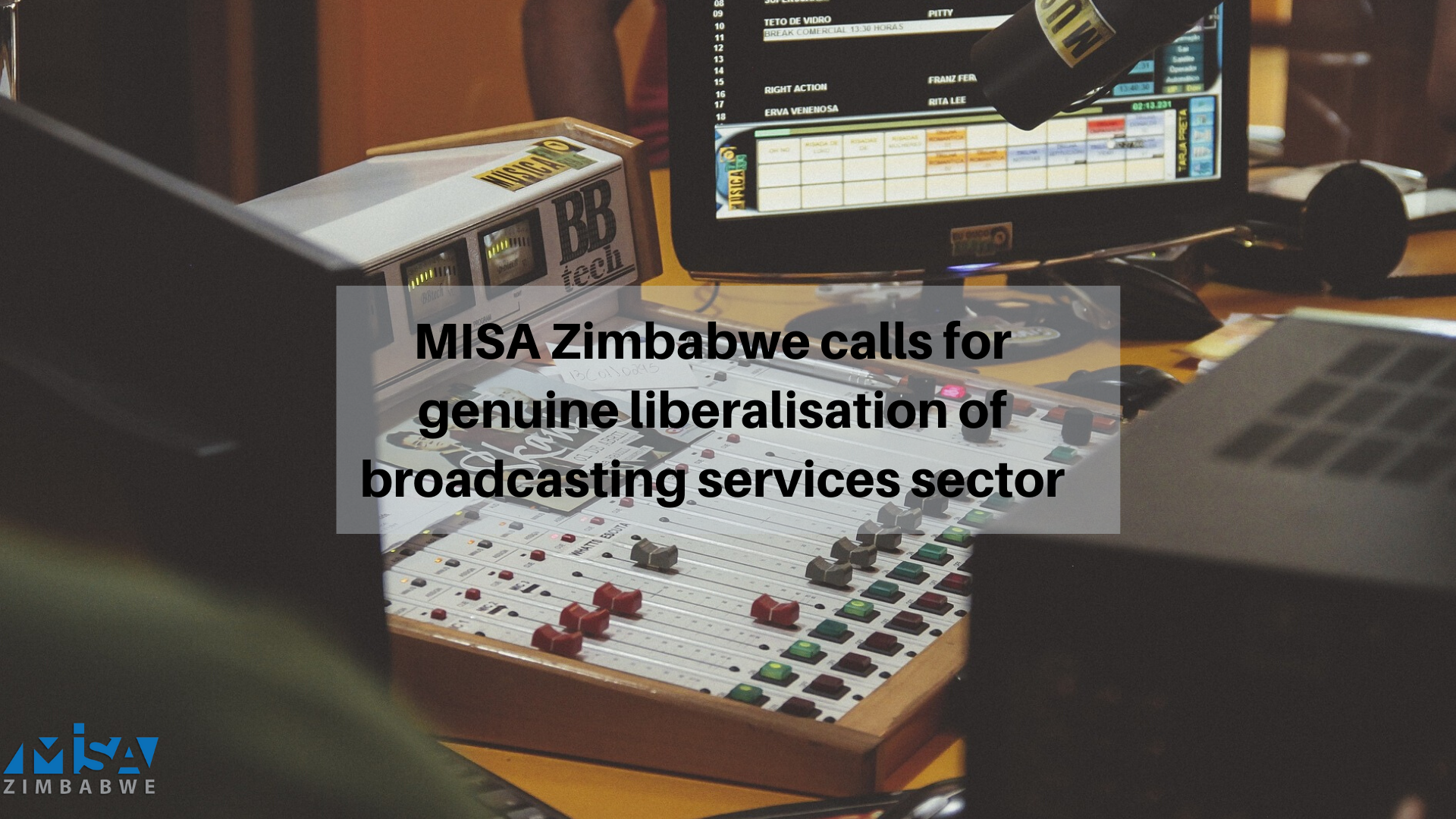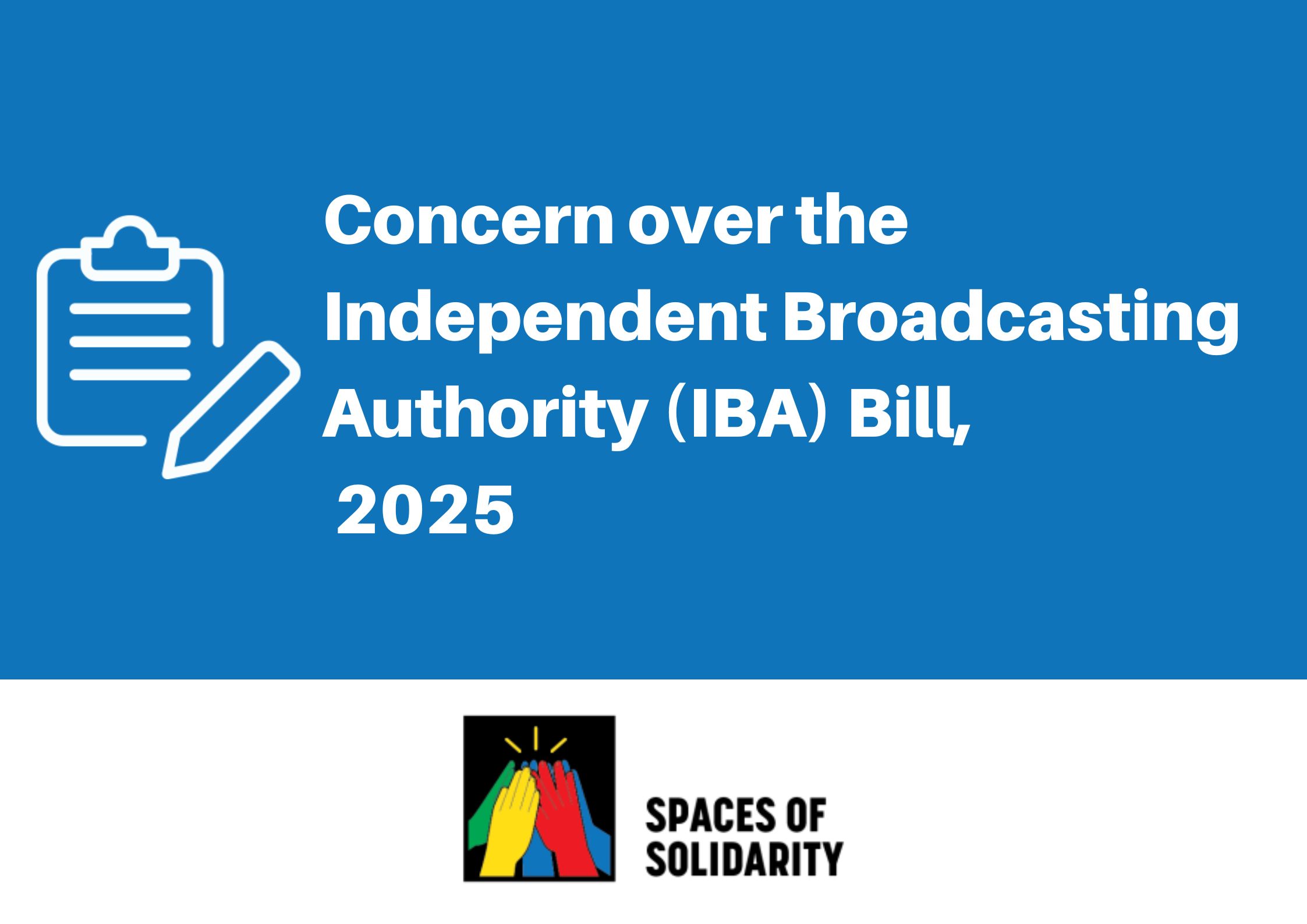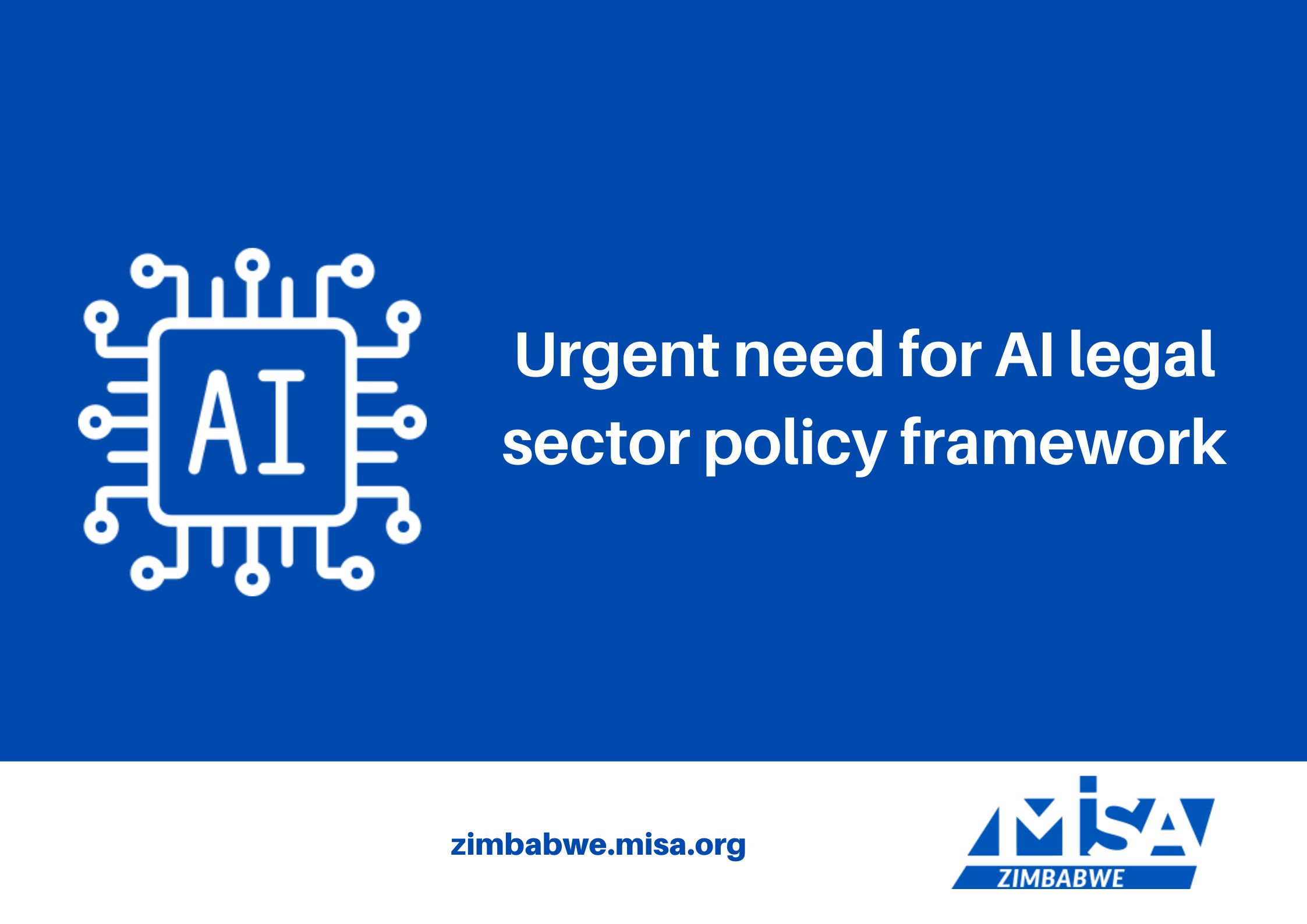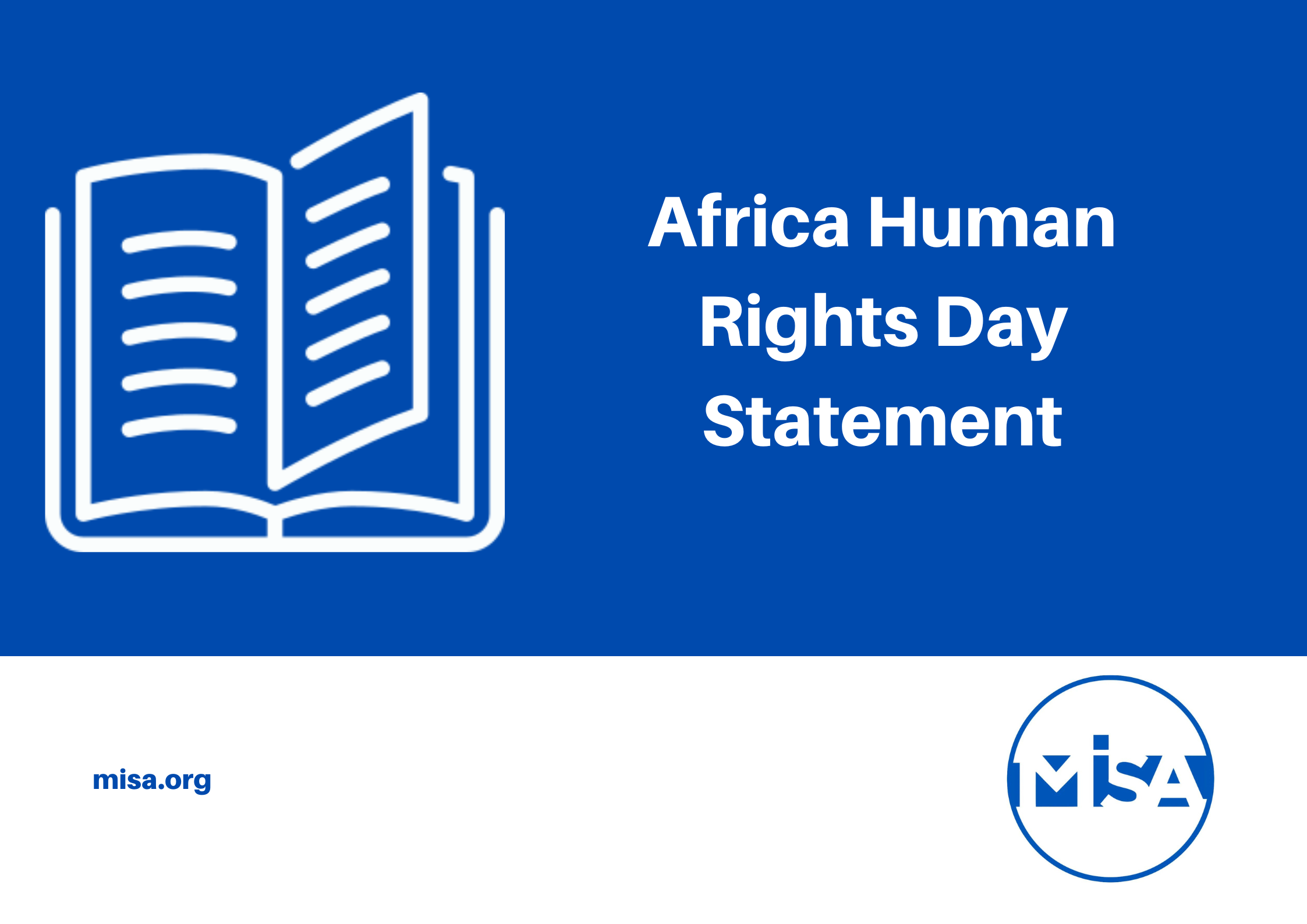On 31 January 2020, the Minister of Information, Publicity and Broadcasting Services gazetted two Statutory Instruments. SI 26 of 2020 regulates Digital Terrestrial Television Broadcasting Services while SI 27 of 2020 regulates issues relating to Licensing and Content. This statement sets out MISA Zimbabwe’s preliminary observations on both Statutory Instruments.
SI 26/2020: Broadcasting Services (Digital Terrestrial Television Broadcasting Services) Regulations, 2020
This piece of legislation might indicate that the government is now working on the finalisation of the digital migration process that is now about five years behind its original completion schedule.
As stated above SI 26/2020 seeks to define and provide preliminary guidelines required for the roll-out of Digital Terrestrial Television Broadcasting Services in Zimbabwe. The Regulations contained in this statutory instrument apply to terrestrial television broadcasting licensees, signal carrier licensees and suppliers of television receivers.
Digital migration refers to the switching of broadcasting from an analogue system to a digital system of broadcasting. The International Telecommunications Union called for this switch to digital because digital broadcasting allows for the broadcasting of higher definition media when compared to analogue broadcasting, much more efficient utilisation of broadcasting spectrum as well as a larger broadcasting range.
A popular example of a digital broadcasting service is Multichoice’s DSTV service. Similarly, once the Zimbabwean digital migration process is complete, viewers will have to require set-top boxes or decoders to access television programming.
The Statutory Instrument sets out definitions, licensing requirements for entities that wish to hold broadcasting licenses and those entities that intend to supply set-top boxes or decoders. Section 7 of the Statutory Instrument is of public interest as it deals with the allocation of frequencies once digital migration is complete.
Allocation of frequencies
Section 7(2) states that the Broadcasting Authority of Zimbabwe will allocate six high definition channels (technically referred to as a Multiplex) to the public broadcaster, which is the Zimbabwe Broadcasting Corporation. Section 8 states that ZBC is deemed licensed to broadcast digital television programming.
BAZ will allocate a second multiplex or six high definition channels to licensed commercial television broadcasters. This implies that BAZ will at some point in future, call for applications for digital broadcasting licenses, all things being equal. MISA Zimbabwe submits that it is necessary that a fully constituted BAZ board oversees and handles such a call for applications, not BAZ secretariat.
MISA Zimbabwe also points out that the ZBC has so far failed to generate content for the current single television-broadcasting channel it is utilising, as evidenced by the following key challenges:
- Lack of quality, independent programming that contributes to a plurality of opinions and an informed public;
- Lack of comprehensive news and current affairs programming, which is impartial, accurate and balanced;
- Lack of wide range of broadcast material that strikes a balance between programming of wide appeal and specialised programmes that serve the needs of minority audiences;
- Limited coverage to serve all the people and regions of the country;
- Poor educational programmes and programmes directed towards children; and
- Limited support for local programme production, through minimum quotas for original productions and material produced by independent producers.
The allocation of an additional six channels is, therefore, a cause for concern until the government provides a practical turnaround strategy that will see the public broadcaster produce and broadcast modern, quality and relevant programming. In the absence of such a strategy, it would be of national benefit if more frequencies were allocated to commercial broadcasters that have the resources to produce quality content. It is MISA Zimbabwe’s considered view that anything short of transforming ZBC from being a state broadcaster towards being a public service utility, will not lead to effective use of the scarce spectrum.
Section 9 reiterates BAZ’s role in ensuring that the Regulations contained in this Statutory Instrument are complied with. BAZ may also decide which analogue broadcasting services may continue operating after the completion of the digital migration process. Lastly, BAZ may order commercial digital television broadcasters to share their broadcasting infrastructure. Such as order to share infrastructure, will however translate to any reductions in licensing fees.
MISA Zimbabwe’s analysis of the digital migration process is available for download at this link: Digital Terrestrial Migration in Zimbabwe: Challenges & Opportunities.
SI 27/2020: The Broadcasting Services (Licensing and Content) (Amendment) Regulations, 2020 (No. 3)
This statutory instrument contains Licensing and Content regulations. SI 27/2020 contains two main provisions; the first introduces a new category of broadcasting, namely the campus radio station. The Statutory Instrument also sets out new licensing fees.
A “campus radio station” is defined as a “broadcasting service run and owned by a college, university or other educational institution whose programming is exclusively by students and broadcast mainly educational programmes for the training of students in media and broadcasting studies.”
It is important to note that these regulations restrict ownership to the tertiary institution’s administration and does not provide for ownership by the students. Programmes broadcast on-campus radio stations must be educational and for the training of students in media and broadcasting studies. The regulation misses an opportunity to economically empower the youth in the tertiary institutions by allowing them either partial and or full ownership of the stations.
Noting the forgoing, children in primary and secondary school education are specifically excluded from participating in campus radio stations yet Zimbabwe celebrates children’s broadcasting day annually.
Licensing fees
SI 27/2020 Introduces high licensing fees for radio, television and webcasting services. An application fee of ZWL$42,500.00 is levied on national television services, national radio services, local commercial radio services, satellite broadcasting services, Video on Demand services and webcasting services.
The annual fees for the above services range from ZWL$110,000.00 to ZWL$1,2 million depending on the respective licensed service. The application fee for community radio licenses is set at ZWL$8,500.00 with an annual fee of ZWL$17,000.00 per annum. Campus radio station licenses will cost ZWL$21,250.00 per application with an annual fee of ZWL$42,500.00.
The current license fee structure maintains the webcasting licensing category which is so broadly defined in the Broadcasting Services Act to include content creators who distribute their content over social media platforms such as Facebook, YouTube and Instagram. The application fee for a webcasting service is ZWL$42,500.00 with an annual fee of ZWL$102,000.00 for content providers.
The new fees are denominated in what appears to be ZW$ or RTGS$ but some are pegged in US$ which is a further addition to the monetary policy inconsistencies ravaging the country where the law requires use of the local currency but the tax authorities and now the Zimbabwe Broadcasting Authority require some licensing fees to be paid in foreign currency.
It is unlikely that local broadcasting and media start-ups will be able to afford these excessive licensing fees. More so, when one considers that BAZ and government intend to limit foreign ownership and investments in local broadcasting enterprises to no more than 20%. This means local investors will have to locally source the funds to establish and run broadcasting entities. MISA Zimbabwe notes with concern that the current licensing regime will act as a barrier to local commercial and private players that have an intention to take part in the media and broadcasting sector.
The Statutory Instruments as part of media law reforms?
The two statutory instruments should be read within the context of the media law reform process. It is key to move with speed to review and extensively amend the Broadcasting Service Act in a wholehearted manner.
At a stakeholder consultative meeting at Pandari Lodge in Harare from the 7th to the 8th of December 2018, the Ministry of Information Publicity and Broadcasting Services’ Permanent Secretary Nick Mangwana hinted that the government was going to licence ten government-owned community radio stations and noted that the government had already secured funding for the same. This could explain why the government has gazetted community radio license fees.
It is within this scope that MISA Zimbabwe calls for the government to be holistic in the review of the media laws and the imperative need towards the genuine liberalisation of the industry to strengthen competition, which in case improves the quality of the programmes and support toward the development of the content generation industry. Further, the government should not be seen as using licensing as a technical barrier towards entry into the industry. The law and the fees should in actual fact be aimed at promoting the constitutional provisions that guarantee freedom of establishment as articulated under section 61 (3) “Broadcasting and other electronic media of communication have freedom of establishment, subject only to State licensing procedures that –
- are necessary to regulate the airwaves and other forms of the signal distribution; and
- are independent of control by government or by political or commercial interests”
The licensing fees as gazetted technically takes away the right to establish as they are beyond the reach of many, especially in the areas of content creation and aggregation and community broadcasting. As already noted, the government, hopefully, will not use the cost of establishment as justification to register its own community radio stations and cracking down on online content creators.
Ends









